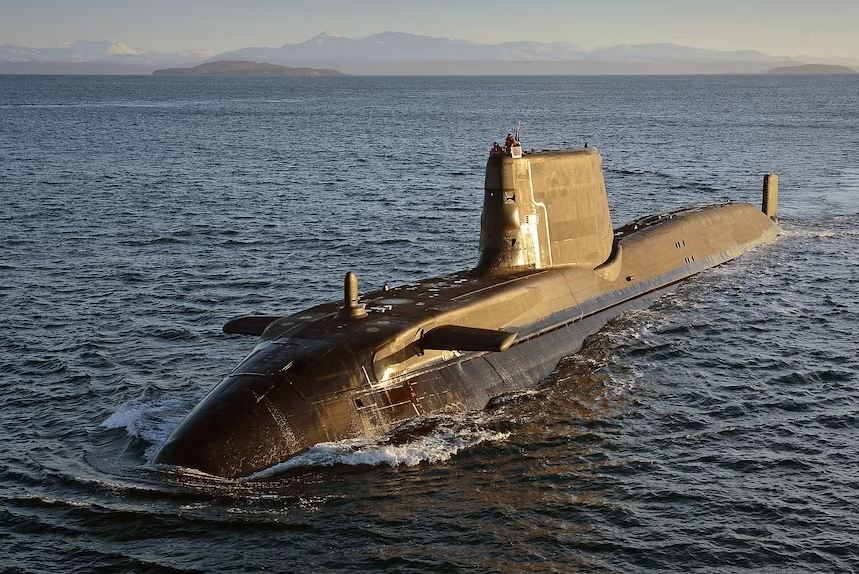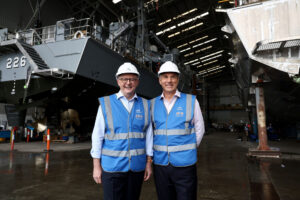AUKUS: Submarines on the Never Never, or Castles in the Sky?

AUKUS has landed – well, sort of.
At eye-watering cost over an extraordinary time frame, Australia is to host the rotation of US and UK submarines before it acquires three to five single-owner pre-loved Virginia class submarines as the pathway to participating in the British design and construction of an evolved Astute class submarines in something like three to four decades time.
Now, why are we undertaking this massive program over a timeframe longer than it took to go from the 1918 Armistice that ended WW1 to the Armistice that ended hostilities on the Korean Peninsula in 1953? Quite a lot happened between those two events, and who’s to say that quite a lot won’t happen over the next thirty-five years?

A Changing World
The answer, of course, is Australia’s fear of China’s rise and our inability to cope with the strategic changes that are underway regionally and globally. To think that defence systems operating now are going to address the complexities of the 2050s is to forget that the world went from biplanes to jet fighters, from gravity bombs to nuclear weapons, in the time that AUKUS will take to deliver “new” submarines.
For more, read Allan’s deep-dive analysis on AUKUS.
For the past forty years, Australia’s defence planning has been based on the objective criteria of armed conflict: distance and terrain, population locations and density, population size (and the limits on the revenue base and military personnel numbers), the maritime approaches, the availability of civil infrastructure and assets and the many other factors that are taken into consideration if a nation is to fight any war, regardless of who the adversary might be.
“A whole bunch of factors”
But now it is China, we are told. In response to Sarah Ferguson, presenter of the ABC’s 7.30 Report on 14 March 2023, the head of Defence’s Nuclear Powered Submarine Task Force slated the rationale for the AUKUS deal back to China. In what one might describe as a “jumble in the rumble” (to channel the US heavyweight boxer Muhammad Ali), the Vice Admiral identified the reclamation of land in the South China Sea, the military modernisation of islands there, and “a whole bunch of factors that played into this”. So much for articulated security policy.
Great political theatre with deep domestic political significance
What the US President and the Prime Ministers of Australia and Great Britain have announced is a game changer. But it is not defence policy, and it is not a defence plan. What has happened is great political theatre with deep domestic political significance.
The AUKUS Wedge Reversed
Labor has snatched the security crown jewels from the Coalition and made them its own. Moreover, by attributing the AUKUS announcement to a newly-minted “bipartisanship”, it has transformed itself from a position of being subject to an attempted wedge by Prime Minister Morrison in September 2021 to reversing the wedge by casting both the former PM and the former Defence Minister, Peter Dutton, as responsible for the plan should the AUKUS fail. And finally, the government has effectively punted AUKUS into the distant future so that it can get down to the more fundamental task of government – delivering sound and costed social policy for the enhancement of people’s lives and the betterment of the conditions in which they live, work and play.
What’s not to like about castles in the sky?
— Allan Behm, Director of the International & Security Affairs Program at the Australia Institute.
Between the Lines Newsletter
The biggest stories and the best analysis from the team at the Australia Institute, delivered to your inbox every fortnight.
You might also like
Chasing a chimera: The political dream of AUKUS that consumes reality
For the sake of taxpayers, let’s hope that the Audit Office is inspecting the AUKUS books closely. Australian money is flushing into the US submarine construction system – a billion US dollars so far, with another billion by year’s end. What will Australia have to show for it? Nothing. Except, of course, for a lot of international
You know what’s more idiotic than a photo op? Walking blindly into the AUKUS pact
There was a lot of hysteria over the symbolism of former premier Daniel Andrews’ photo op with assorted dictators at a Chinese WWII military ceremony, but precious little discussion or analysis of the so-called threats to Australia’s security.
Australia doesn’t need AUKUS
By reviewing the deal, Trump has given the Australian Government an opportunity to get out of the disastrous AUKUS agreement.


